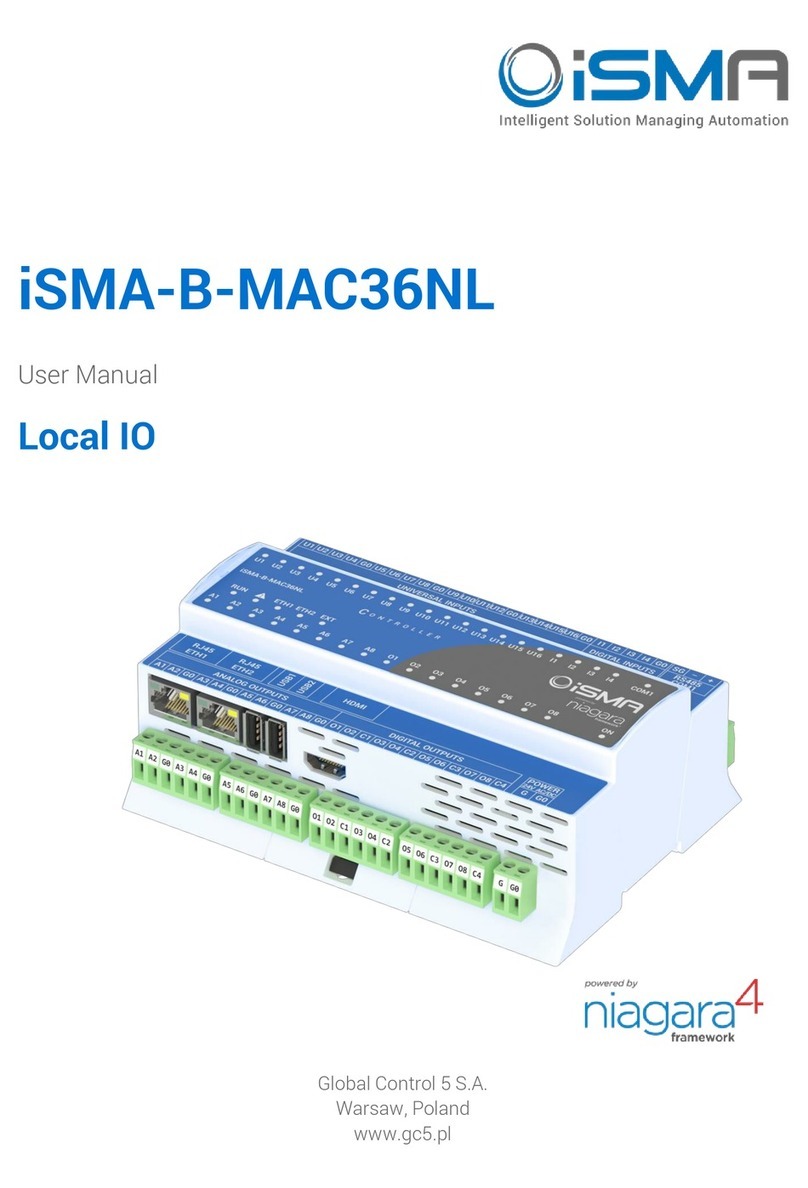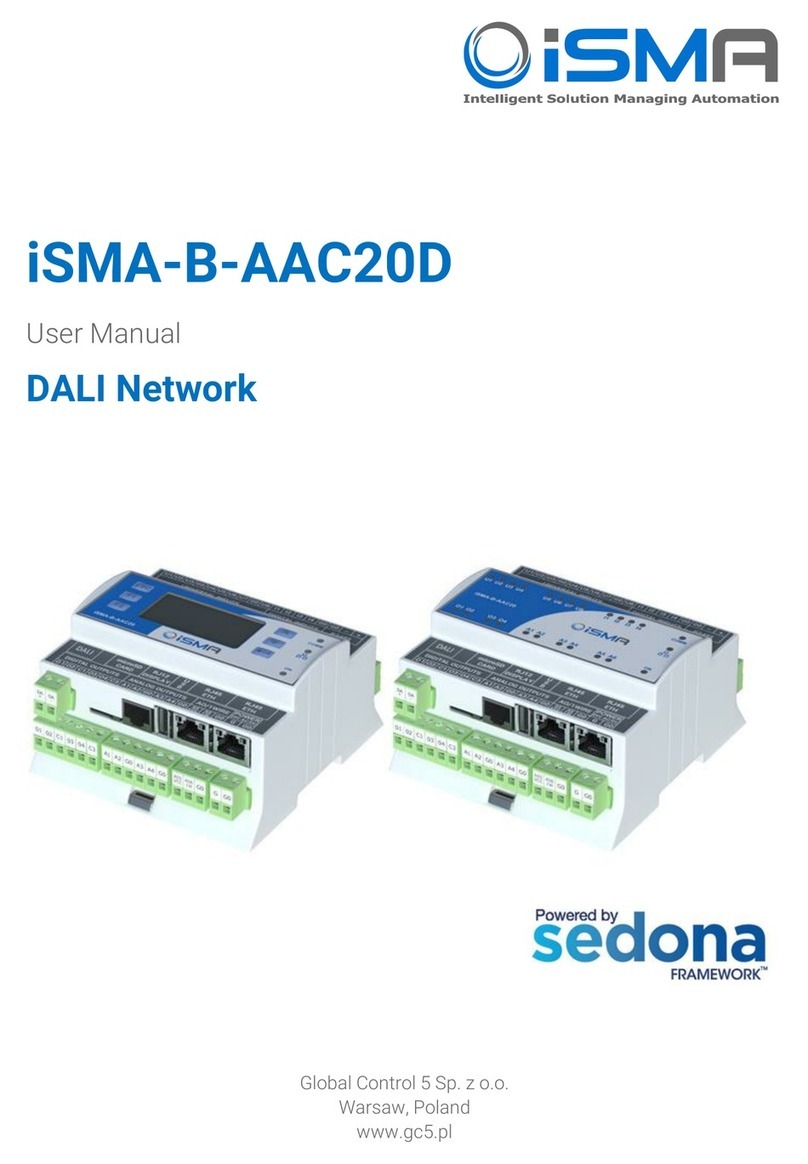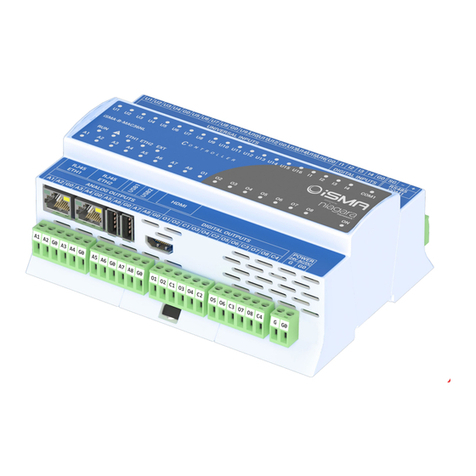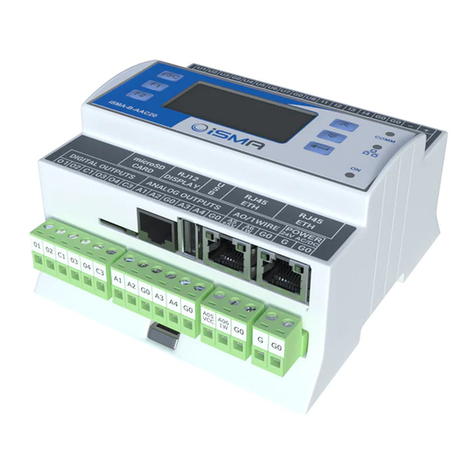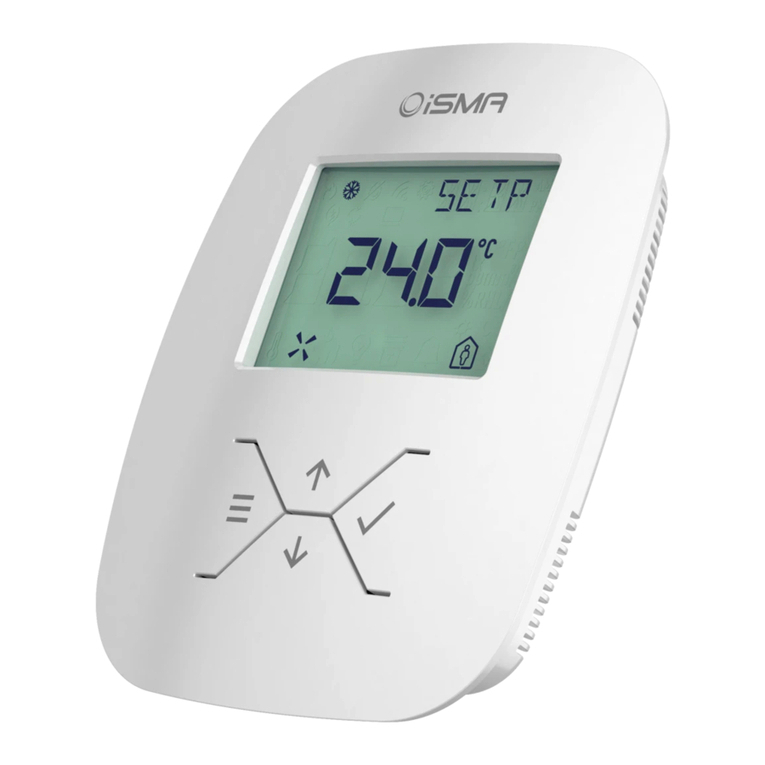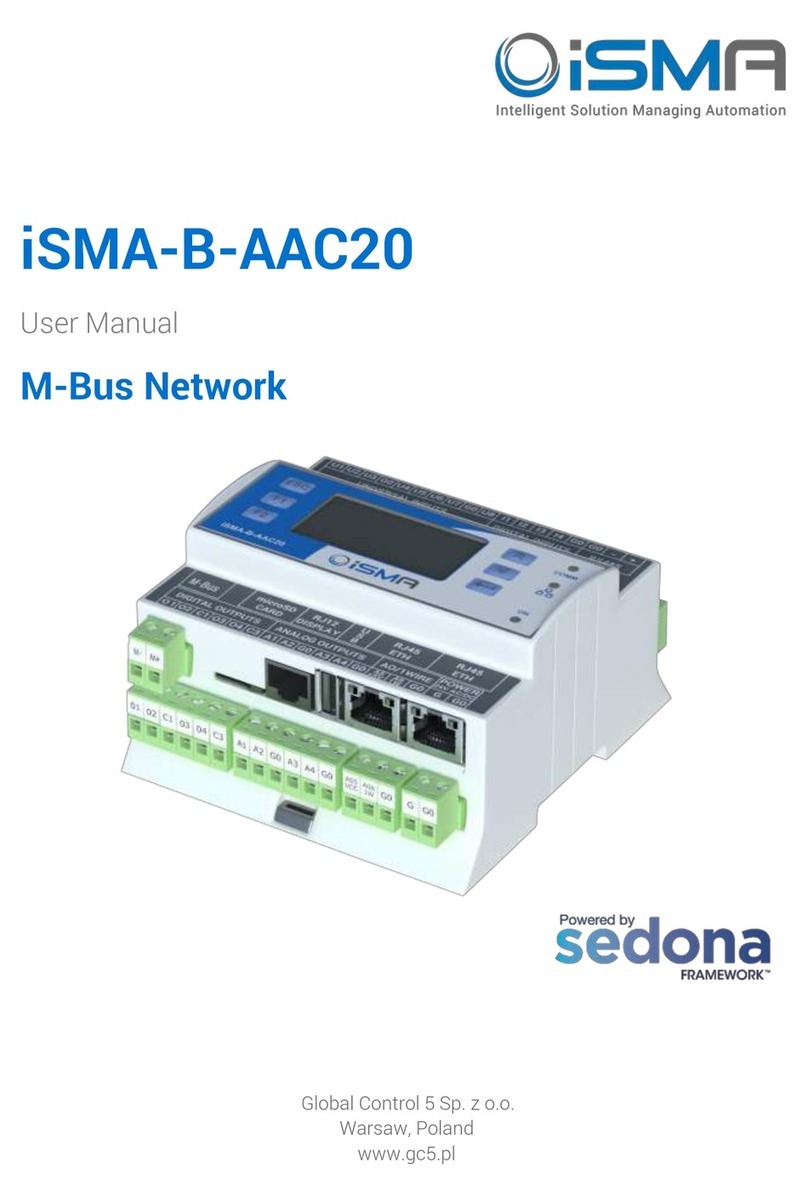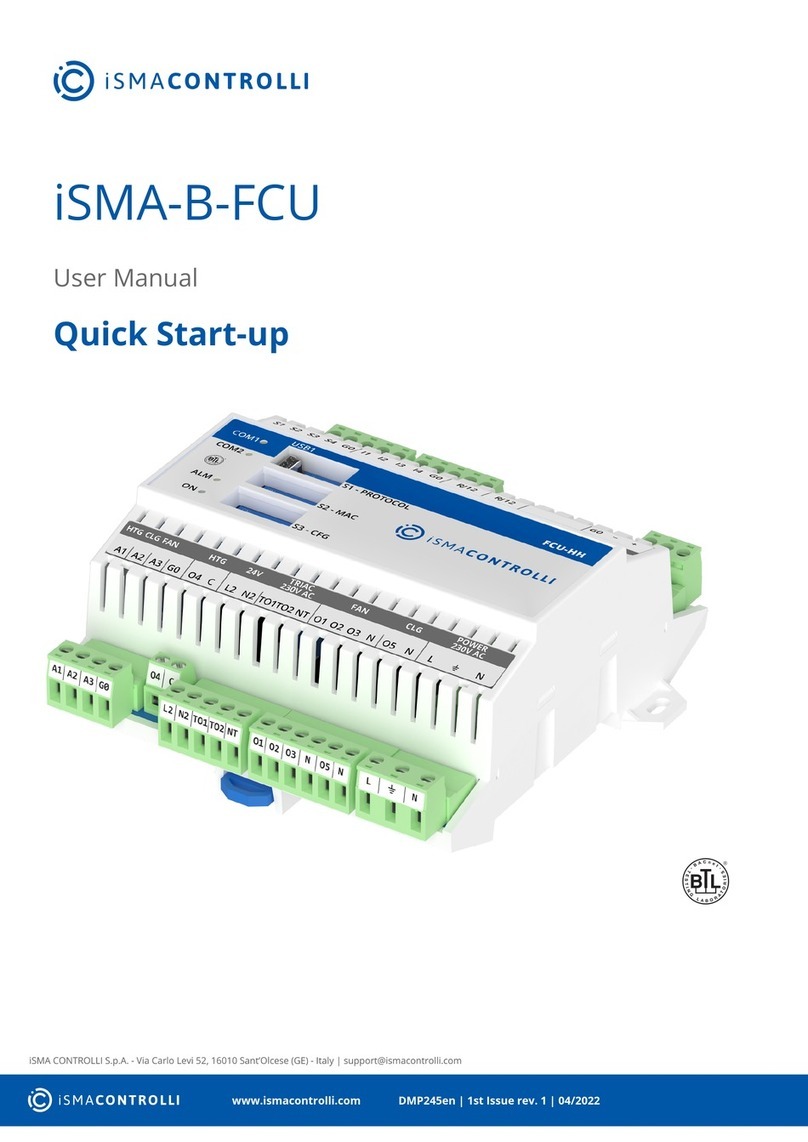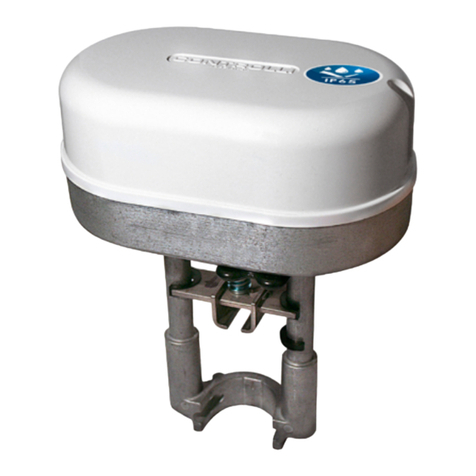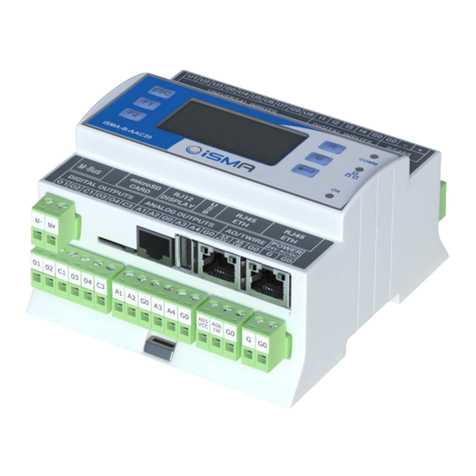iSMA-B-FCU /FCU Hardware
Version 1.1 www.gc5.pl Page 2 / 37
Table of contents
1Introduction 3
1.1 Document change log 3
1.2 Safety rules 3
1.3 Technical specifications 4
1.4 Dimensions 6
2Hardware specification 7
2.1 Diagram of terminals and internal connections 7
iSMA-B-FCU-HH 7
iSMA-B-FCU-HL 8
iSMA-B-FCU-LL 9
2.2 Power supply connection 10
24V AC power supply for external equipment 10
2.3 Connecting the communication bus (RS485) 11
RS485 grounding and shielding 11
RS485 network termination 11
2.4 RJ12 Panel connection 12
2.5 Mini USB Port 12
2.6 Front panel LED functions 12
2.7 Setting controller address 13
2.8 Baud rate selection 14
2.9 Protocol selection 15
2.10 Restoring the default settings 15
2.11 Default settings 15
2.12 CFG DIP switch 16
3ISMA-B-FCU device inputs 17
3.1 Special Inputs 17
Special Inputs operating as digital inputs 17
Special Inputs operating as 0-10 V DC analog inputs 18
Special Inputs operating as resistance inputs 18
Special Inputs operating as temperature inputs 19
3.2 Digital Inputs 20
Digital Input fast counter 20
4ISMA-B-FCU device outputs 21
4.1 Triac Outputs 21
4.2 Digital Outputs 22
O1 – O3 relays “Fan” 22
O4 – HTG relay “Electrical Heater” 22
O5 – CLG relay “Electrical Cooler” 23
4.3 Analog Outputs 24
5MAC DIP SWITCH addressing table 26
6List of supported temperature sensors 32
